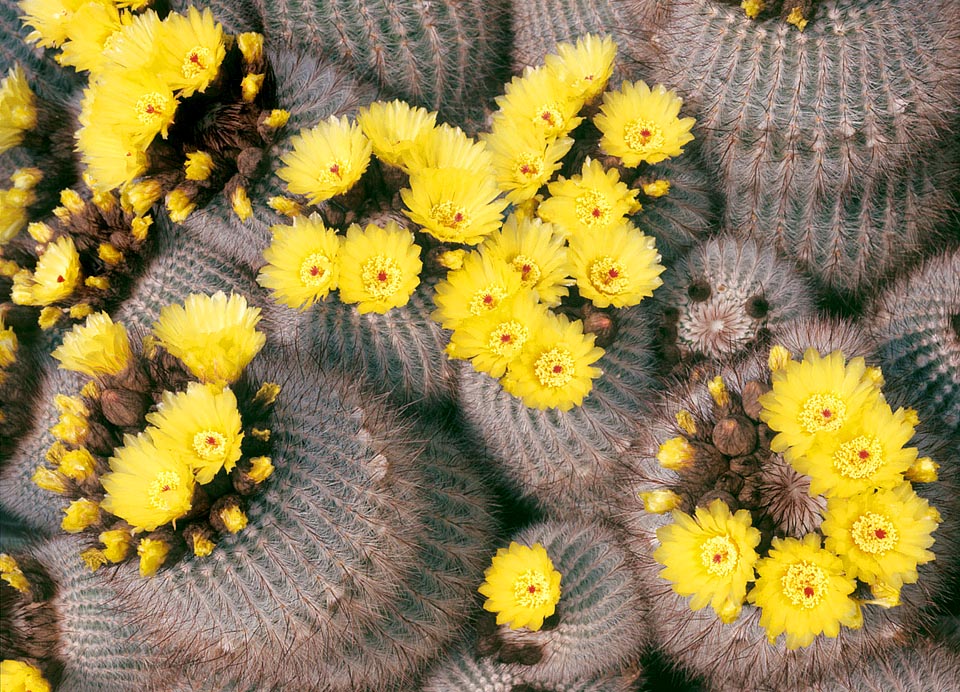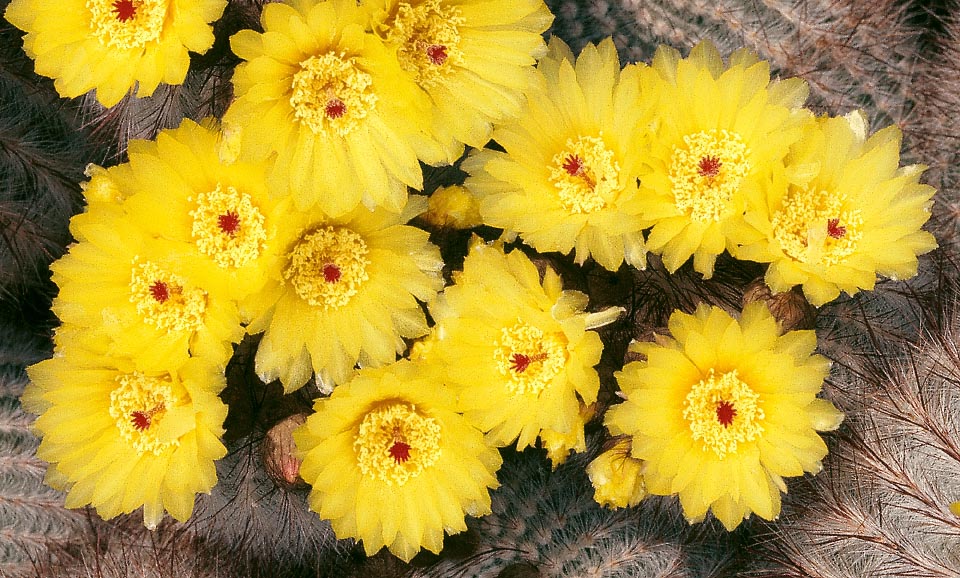Family : Cactaceae

Text © Pietro Puccio

English translation by Mario Beltramini

The Parodia scopa, so called for the thorns, thick like a broom thin branches, grows on the rocky slopes of Brazil and Uruguay © Giuseppe Mazza
The genus is honoured to the Argentinean botanist Lorenzo Raimundo Parodi (1823-1890); the name of the species is the Latin word “scopae” = broom, with reference to the thick thorns of which it is provided.
Common names: “silver ball cactus”, “snowball cactus” (English); “tuna” (Spanish).
Solitary or cespitose plant with pale green stems, initially globose, then cylindrical, with depressed apex, 5-50 cm tall and with a diameter of 6-10 cm. The stems have 30-40 slightly spiralled ribs, 3 mm tall, with close and not much evident tubercles and circular areolas, covered by white down when young, provided of even 40 radial thorns, thin, white, 5-7 mm long, and 3-4 central, needle-shaped, robust, 6-12 mm long thorns of a reddish brown to white colour.
The flowers, usually placed in circle close to the apex, are funnel-shaped, 2-4 cm long and 3-4 cm of diameter, with lanceolate, 20-25 mm long and about 5 mm broad petals, with serrate margins, of a bright yellow colour and bright red style, the ovary has woolly areolas with thin thorns.

Solitary or cespitose, with stems of 6-10 cm of diameter, combinrs the sculptural look with masses of bright 3-4 cm broad flowers. Easy to grow © Giuseppe Mazza
Very ornamental plant due to its shape, colour and disposition of the thorns, which almost hide the surface of the stems, and for the big and showy flowers; particularly suitable, due to the facility of cultivation and the generous blooming for those who begin to love the cultivation of the cacti.
It is to be cultivated in full sun, or slight shade, on preferably acidic and particularly draining soils, which can be composed by about the 50% of earth rich of humus and for the rest by siliceous coarse sand. In summer, during the vegetative period, it is to be regularly watered, but allowing the soil to dry up completely before watering again, in winter it is to be kept dry and at rather low temperatures, but not less than +4 °C, this period of rest, cold and dry, is indispensable for getting a good blossoming.
The plant is inscribed into the appendix II of the CITES (plant for which the trade is ruled at international level).
Synonyms: Cactus scopa Sprengel (1825); Cereus scopa Salm-Dick (1828); Malacocarpus scopa (Spreng.) Britton & Rose (1922); Notocactus scopa (Sprengel) A.Berger (1929); Notocactus succineus F.Ritter (1970); Parodia succinea (F.Ritter) N.P. Taylor 1987.
